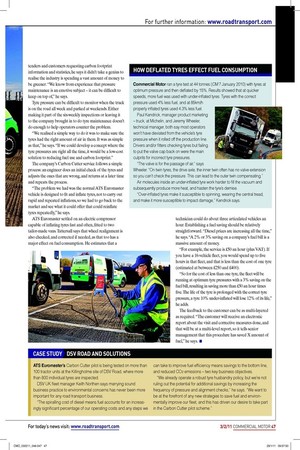HOW DEFLATED TYRES EFFECT FUEL CONSUMPTION
Page 41

If you've noticed an error in this article please click here to report it so we can fix it.
Commercial Motor ran a tyre test at 44 tonnes (CM 7 January 2010) with tyres at optimum pressure and then deflated by 15%. Results showed that at quicker speeds, more fuel was used with under-inflated tyres. Tyres with the correct pressure used 4% less fuel, and at 85km/h properly inflated tyres used 4.3% less fuel.
Paul Kendrick, manager product marketing – truck, at Michelin, and Jeremy Wheeler, technical manager, both say most operators won’t have deviated from the vehicle’s tyre pressure when it rolled off the production line.
Drivers and/or fitters checking tyres but failing to put the valve cap back on were the main culprits for incorrect tyre pressures.
“The valve is for the passage of air,” says Wheeler. “On twin tyres, the drive axle, the inner twin often has no valve extension so you can’t check the pressure. This can lead to the outer twin compensating.” Air molecules inside an under-inflated tyre work harder to fill the vacuum and subsequently produce more heat, and hasten the tyre’s demise.
“Over-inflated tyres make it susceptible to spinning, wearing the central tread, and make it more susceptible to impact damage,” Kendrick says.













































